The Living Room
Introduction
Text-to-speech Audio
One of Mrs. Ella Long's favorite spaces in Corinthian Hall, the Living Room was used for family time and for entertaining close guests. As part of their effort to share the history of the original owners of the home on the first floor, the Kansas City Museum has sought to reacquire original furnishings to show visitors how this room would have appeared. Unfortunately, none of the original furniture has survived. The wood flooring and wall sconces are original features of the room. The magnificent Steinway piano is original to Corinthian Hall, but was originally located in the Salon. The west wall features reproductions of the original wallpaper and one of the paintings. The room features a life-size blueprint of the mantel that would have been present in the room when the Long family lived in Corinthian Hall, giving a further sense of the ornamentation.
Images
A photo of the Steinway piano located in the living room
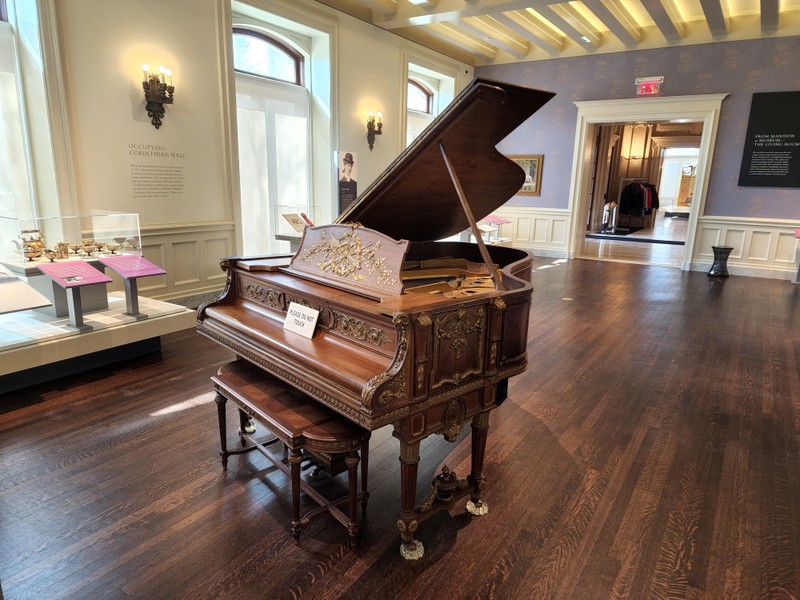
Door handles original to Corinthian Hall
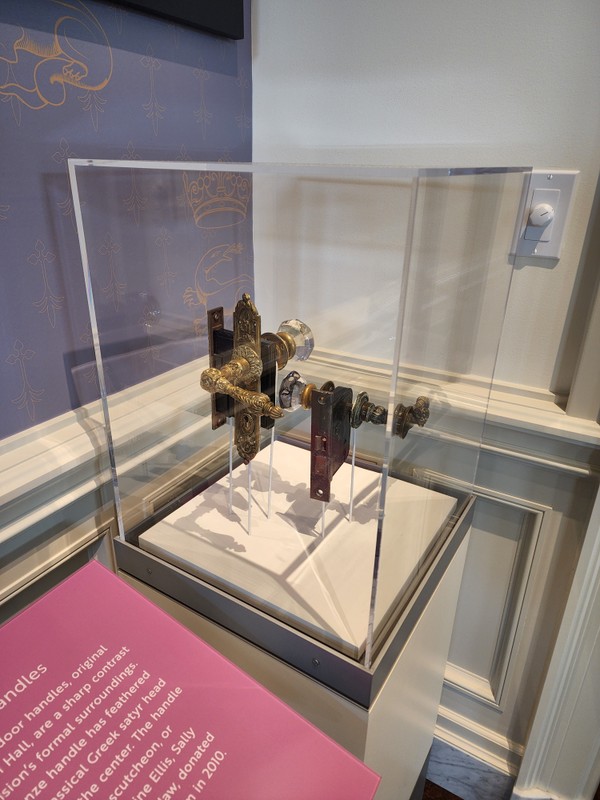
Blueprint of the fireplace and mantel that were once located in the living room
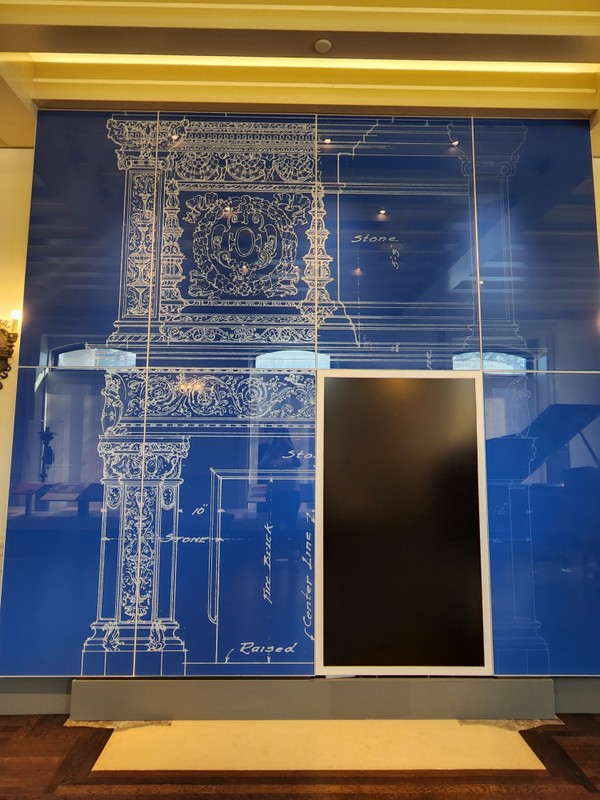
Reproduction of "The Mandolinist" by Eugen Von Blaas, located in the living room
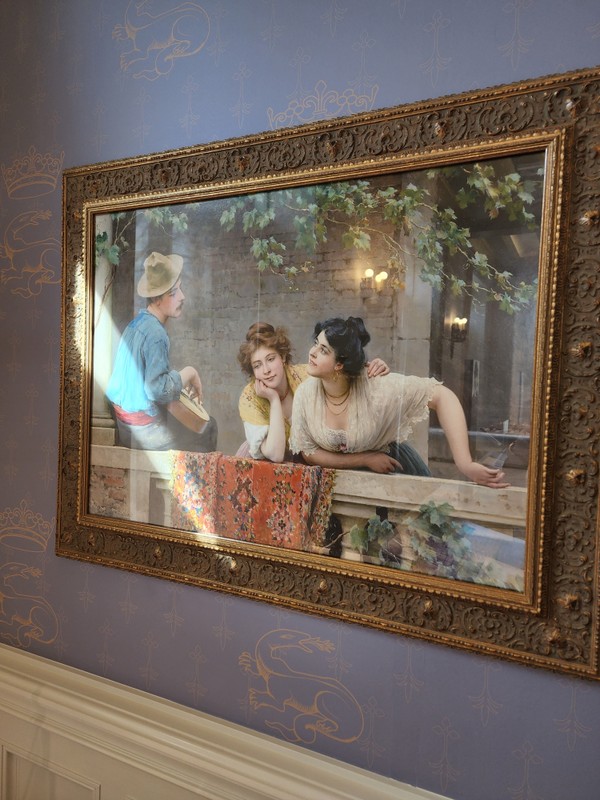
Photo of the Steinway piano located in the living room, looking towards the dining room
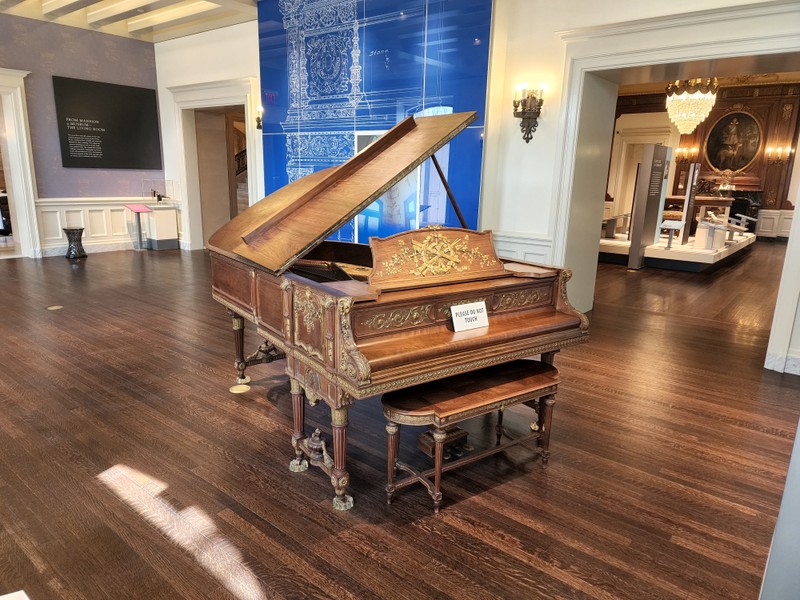
China set from the Long Family's travels
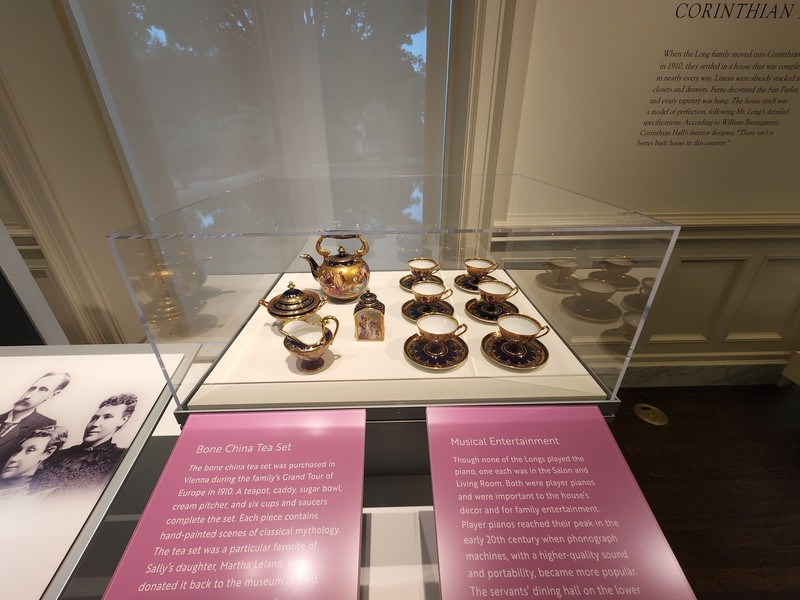
Backstory and Context
Text-to-speech Audio
When construction of Corinthian Hall finished in 1910, the Long family moved into a fully furnished house that met all of the detailed instructions that Robert Long had provided to the architect Henry Hoit, and the interior designer William Baumgarten. The living room followed the interior's French influence, but it also served as a slightly less formal space than other rooms on the first floor of the home. As a result, it offered a space for relaxation and comfort for the Long family.
With the living room's décor consisting of blue and gold slate with a marble base, and blue damask with salamander and crown motifs on the wallpaper, the Francis I style did not take away from the comfort of the space provided to the family. Cast bronze satyr door handles and a sconce displayed in the room offer insight into the details that were included in the home's construction, adding luxury and décor to even the most mundane aspects of the home. Such additions, along with the general expertise that the home was constructed, led Baumgarten to proclaim:
"There isn't a better built house in this country."1
Ella Wilson Long, Robert A. Long's wife, frequented the living room as it was one of her favorite rooms in Corinthian Hall. Ella, originally a Pennsylvania Quaker, moved to Columbus, Kansas in 1870. In 1875, she married Robert A. Long, and they moved their family to the Kansas City area around 1890 as his business grew. As the lady of the house, Mrs. Long managed the everyday business of Corinthian Hall, including staff management and daily scheduling, as well as preparing for guests and events. However, even with such a busy life, Mrs. Long found many opportunities to enjoy both leisure time and to contribute to charitable ventures. Both Mr. and Mrs. Long took pride in their philanthropic endeavors.
Mr. and Mrs. Long added souvenirs from their travels to their home. A replica and an original work of art in the museum represent the connection between travel and the home's furnishings. Several pieces in the home were acquired by the Longs on their European Grand Tour in 1910. The museum includes a replica of the painting "The Mandolinist" by Eugen von Blaas, an Austrian artist born in Italy. The original painting, sold during the 1934 auction, had hung in the living room since the family's initial move into Corinthian Hall. The current reproduction on display was donated to the museum in 2019 by Sotheby's. The second piece is a bone china tea set that features hand painted scenes from Greek mythology. The china set was used by the Long family, including the grandchildren. Martha Leland, Sally Long's oldest daughter, and Mr. and Mrs. Long's granddaughter, eventually inherited the set as it was one of her favorites from her grandparents' home. She donated the set to the Kansas City Museum in 1990.
Along with artwork and utensils used for family time, the family valued musical entertainment, seen through the inclusion of pianos in both the living room and the salon. No member of the family could play the piano themselves, so the player piano in the Salon allowed them to enjoy musical entertainment each day. Although player pianos would one day be replaced by phonographs, the pianos continued to serve as beautiful decorations in the home for the family to admire.
Although the family's city-based home was luxurious and well-crafted, Mr. Long dreamed of having a country home like those he saw while growing up in Kentucky. Thus, with the help of Henry Hoit once again, Longview Farm located in Lee's Summit, Missouri, arose. The mansion on the 1,780-acre property, designed by Hoit, served as an escape from the city for the family. Additionally, the property served as a fully-functional farm with 40 buildings and 175 staff members. The farm produced milk for the community and its staff raised livestock. The farm became especially well-known for breeding horses and Hackney ponies, some of which were used by Loula Long Combs, a champion equestrienne in North America and Britain. Loula participated in her first horse show in 1906, one year after the American Royal horse show in Kansas City began, and her career included thousands of awards. Loula moved to Longview Farm in 1917, where she and her husband, Robert Pryor Combs lived until her death in 1971. Loula and her sister Sally donated 146 acres of the Longview property for the construction of Longview Community College.
Although not all of the original aspects of the home are preserved, the museum ensures that patrons know which items are original to the home and which are not, and have worked ceaselessly to maintain the historical integrity and architecture of the spaces for the most immersive experience.
Sources
- Kansas City Museum, 3218 Gladstone Blvd., Kansas City, MO, 64123 (accessed March 8, 2022). Wall Plaques: Wall text. Francis I Living Room, Kansas City Museum, Kansas City, Missouri.
